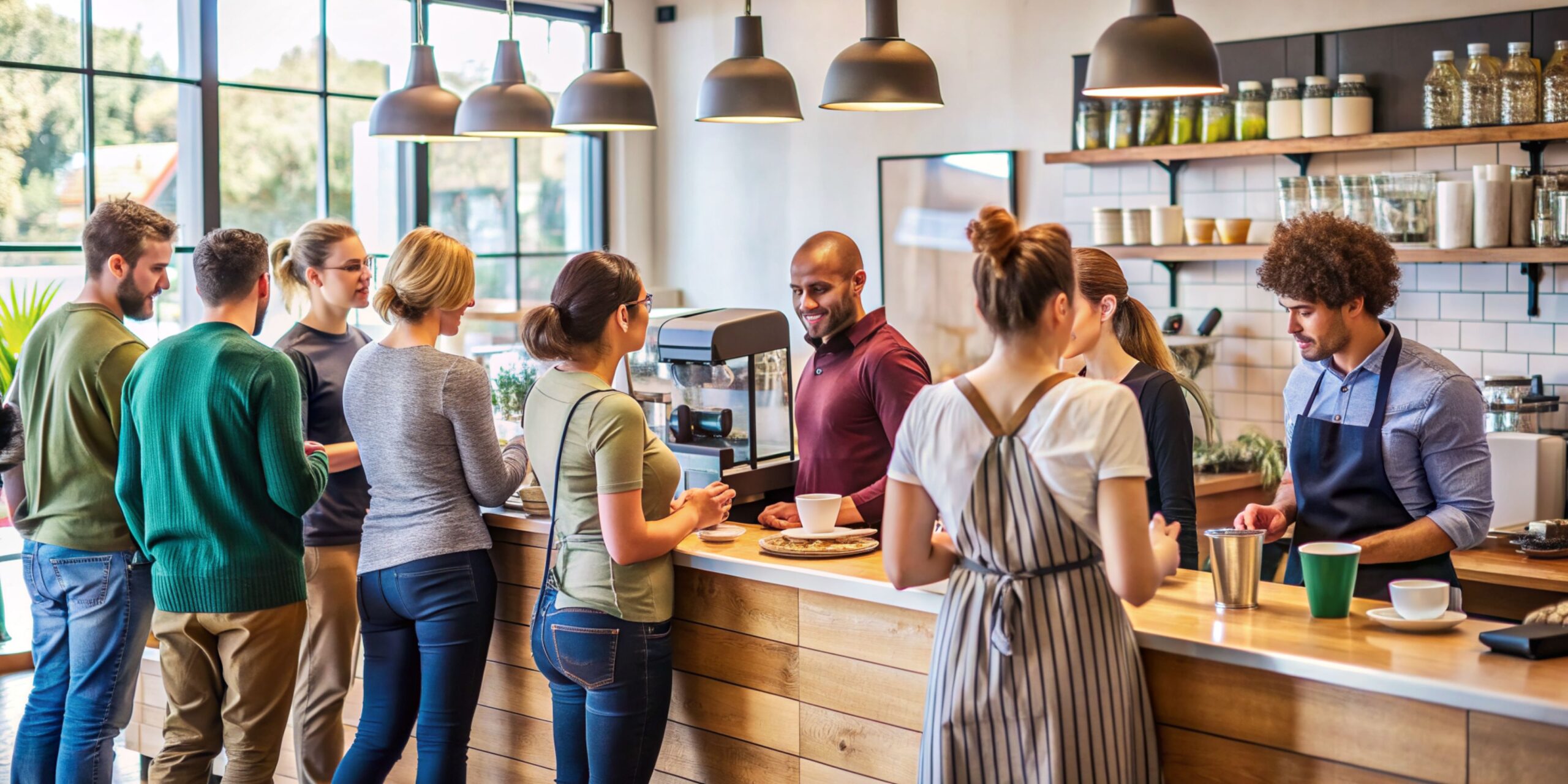Boosting restaurant engagement improves the dining experience and loyalty. Firstly, create a welcoming environment with thoughtful decor, lighting, and music. Train staff to be friendly, attentive, and knowledgeable. Technology, like digital menus and online reservations, is essential. Also, consider live cooking demonstrations. Engage with customers on social media and respond quickly to feedback. Using data, personalize their experience. Hosting special events and working with local businesses can get new customers. They also build community. By focusing on these aspects, your restaurant will become a vibrant, engaging place customers love.
Understanding Restaurant Engagement
Restaurant engagement involves strategies and interactions that connect a restaurant with its customers. This includes staff interactions, the dining environment, and technology. Engaging customers is crucial. It turns occasional diners into loyal patrons who feel valued and connected.
High levels of restaurant engagement offer several advantages. First, it builds customer loyalty. Engaged customers return and recommend the restaurant. This boosts the restaurant’s reputation and attracts new customers. Also, engaged customers spend more. This leads to higher sales and profits.
1. Create a Welcoming Atmosphere
Creating a welcoming atmosphere is essential for enhancing the dining experience and encouraging customers to return. A pleasant ambiance can make a significant difference in how customers perceive your restaurant.
- Lighting:
The right lighting can set the mood, create a warm atmosphere, and highlight the restaurant’s decor. Soft, warm lighting can make the space feel cosy and inviting, while brighter lights can highlight specific areas or features of the restaurant. Consider using dimmable lights to adjust the ambiance according to the time of day and the mood you want to create.
- Music:
Carefully chosen background music can enhance the dining experience without overpowering conversation. The type of music should align with your restaurant’s theme and target audience. For example, a fine dining restaurant might opt for classical or jazz music, while a casual eatery might choose more upbeat tunes. The volume should be kept at a level where it adds to the atmosphere without making it difficult for customers to converse.
- Decor:
Thoughtful decor that reflects the restaurant’s theme and personality can make the space more attractive and comfortable. Use elements that tell a story or convey the essence of your restaurant. Whether it’s rustic, modern, or themed, the decor should be consistent and appealing. Plants, artwork, and comfortable seating can all contribute to a more inviting environment.
- Staff Training:
Friendly and attentive staff are essential for creating a welcoming environment. Well-trained Staff can make customers feel valued and appreciated, which is crucial for repeat business.
Customer service training: Equip staff with the skills to handle customer interactions professionally and warmly. This includes greeting customers, taking orders accurately, and dealing with complaints effectively.
Staff appearance and attitude: Ensure staff present themselves neatly and maintain a positive, helpful attitude at all times. A well-groomed, uniformed team can enhance the restaurant’s image and make a good impression on customers.
2. Interactive Menu and Dining Experience
Modernising your menu presentation and offering interactive dining experiences can greatly enhance customer engagement.
Innovative Menus: Digital menus and interactive elements can make the dining experience more engaging and convenient for customers.
- QR codes for menu access: Allow customers to view the menu on their devices by scanning a QR code. This not only reduces physical contact but also makes it easy to update the menu regularly.
- Detailed descriptions and images: Provide enticing descriptions and high-quality images of dishes to help customers make informed choices. This can also stimulate their appetite and encourage them to try new items.
Live Cooking and Demos: Offering live cooking shows or demonstrations can captivate customers and provide a unique dining experience. This interactive element allows customers to see how their food is prepared and adds an element of entertainment to their visit.
Special Events: You can host themed nights, cooking classes, or tasting events. They can draw in crowds and provide memorable experiences. These experiences encourage repeat visits. These events can build community. They give customers a reason to visit your restaurant outside regular dining hours.
3. Leverage Technology
Leveraging technology can streamline the customer experience and make your restaurant more efficient and appealing.
- Online Reservations and Ordering: Implementing an easy-to-use online reservation and ordering system can reduce waiting times and make it easier for customers to plan their visit. This convenience can enhance the overall dining experience and increase customer satisfaction.
- Loyalty Programs: Create a digital loyalty program to reward repeat customers with discounts, freebies, or exclusive offers. This not only encourages them to return but also helps build a loyal customer base.
- Social Media Engagement: Use social media platforms to interact with customers and Promote Your Restaurant.
- Regular updates and engaging posts: Keep your audience informed about new dishes, events, and promotions. Engaging content can attract new followers and keep existing customers interested.
- Responding to customer comments and messages: Show that you value customer feedback by responding promptly and thoughtfully. This can enhance your restaurant’s reputation and build stronger relationships with your customers.
4. Personalise Customer Experience
Personalising the customer experience can make each visit memorable and show customers that you value their patronage.
Customer Data: Use data to understand customer preferences and tailor experiences to individual needs.
Collecting feedback: Regularly gather feedback through surveys, comment cards, and online reviews. This can provide valuable insights into what customers like and where improvements are needed.
Using CRM systems: Employ customer relationship management systems to track preferences and interactions. This data can help you personalise marketing efforts and improve the overall customer experience.
Personalised Offers: Send personalised offers and promotions based on customer preferences and past dining habits. This can make customers feel valued and encourage them to return.
5. Encourage Customer Feedback
Encouraging customer feedback is essential for continuous improvement and customer satisfaction.
Feedback Channels: Provide multiple ways for customers to leave feedback to understand their dining experience better.
Comment cards: Offer physical cards for customers to fill out during their visit. This can provide immediate feedback on their experience.
Online reviews: Encourage customers to leave reviews on popular review sites. Positive reviews can attract new customers, while constructive feedback can help you improve.
Social media: Use your social media platforms to solicit feedback and engage with customers. This can also enhance your online presence and reach a wider audience.
Responding to Feedback: Show appreciation for all feedback and address any concerns promptly. And demonstrate your commitment to customer satisfaction. Acknowledging feedback and taking action can improve your restaurant’s reputation and build customer loyalty.
6. Community Engagement
Engaging with the local community can boost your restaurant’s reputation. It can also attract local customers.
Local Partnerships: Collaborate with local businesses and organisations to create a sense of community and attract local customers. Joint promotions, events, or partnerships can benefit all parties involved.
Charity Events: Host or participate in charity events to give back to the community and enhance your restaurant’s reputation. Customers appreciate businesses that contribute to good causes.
Customer Involvement: Involve customers in community initiatives and events to strengthen their connection to your restaurant. This can build a loyal customer base and create a positive community image for your restaurant.
Conclusion:
In conclusion, boosting engagement in your restaurant is vital. It improves the dining experience and builds customer loyalty. We’ve discussed key strategies. First, create a welcoming atmosphere with suitable lighting, music, and decor. Second, train staff to be friendly and attentive. We encourage you to apply these tips. You’ll see the benefits first-hand. Remember, fostering engagement is fundamental to building a successful and thriving restaurant. Remember, fostering engagement is fundamental to building a successful and thriving restaurant.






